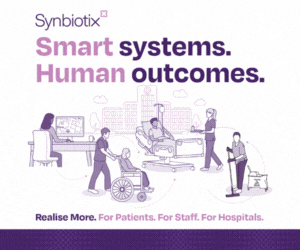As COVID-19 continues to take its toll on the NHS, the people who work within it and the services they provide, HEFMA takes a look at the impact of the response to the pandemic on Estates and Facilities staff and services.
There is no doubt that COVID-19 is having a profound and lasting effect on all aspects of life across the world. In practice, this has not been uniform. In the UK, whilst millions of workers have been furloughed or made redundant and millions of school children and university students have had to adapt to online classes and home schooling, in the health service the impact has been on trying to maintain services and patient care in an extremely challenging environment. In the words of one senior manager in estates we spoke to, it feels like a "different world."
In practice, working from home for many E&F staff is either not possible or not practical. A facilities manager we spoke to told us in eight weeks he had worked from home for one day only. "It didn't work," he explained. "We're too operational and staff numbers are low on the ground anyway."
The virus has exposed lack of investment in staff and existing pressures have been compounded by vulnerable staff shielding, staff suspected of having the virus self-isolating and of course, staff becoming ill and, sadly, dying, all of which are factors that have exacerbated staff shortages and left many working even longer hours, often without days off.
For staff who are able to work remotely - even some of the time - Microsoft Teams has become the norm. On May 20, NHS Digital reported that the average number of remote meetings carried out in the NHS using Microsoft Teams had reached 90,250. That's more than a six-fold increase since the week it was rolled out across the NHS following lockdown restrictions at the end of March. The number of active users per weekday has also more than trebled.
Microsoft Teams was made available to the NHS to use free of charge for a limited time-period to help counter risks associated with COVID-19 by supporting remote and mobile working. It provides secure instant messaging, direct audio and video calls and has virtual meeting capabilities.
Preparing the estate
NHS Trusts have been very quick to react to the demands of COVID-19. From the preparation of the estate to accept unprecedented numbers of patients and taking steps to manage that increased demand, to introducing measures to meet the needs of hard working staff, the NHS has often been ahead of the curve. For instance, in suspending elective procedures and operations and extending free car parking facilities for staff, many Trusts acted before the government. However, the effects of many years of under-investment in the estate and steadily increasing backlog maintenance have been felt by estates teams stepping up to the requirement to increase intensive care capacity within their hospitals. One manager working within estates in a major acute Trust told us they were originally asked to increase critical care beds by more than 500% by converting other wards into ICUs. It's quite a target, which was complicated by the condition of some of the wards they had to consider which needed significant remedial works to bring them up to ICU specification.
Ultimately, as has been the case with many of the Nightingales, that capacity has so far proved to be unnecessary. The Trust doubled its critical care beds, which has so far been sufficient and at times has left surplus capacity. The work to prepare for COVID-19, increasing beds, investing in medical equipment, preparing wards and accelerating some existing schemes has come at a cost of around £8m for this one Trust alone. Increased demand is anticipated again currently - probably as a combination of the Trust preparing to resume routine treatments as well as a possible second peak.
The work that has gone into the creation of the Nightingale hospitals around the country has been impressive and has built capacity into the system that has so far been under-utilised. This has also put pressure on E&F teams who have been called on to assist with building the necessary infrastructure.
In the South West a different approach is being taking to the creation of a Nightingale hospital. The needs of the South West, which has a more elderly population, mean longer-term options may be necessary. Whilst most of the Nightingale hospitals are occupying sites such as conference centres that will return to their original use once they are able to, the South West is considering taking a former Homebase unit on an industrial estate near Exeter, which could be used for much-needed storage if and when it is no longer in demand for patient care.
Moving to the next stage of the COVID-19 response is bringing more challenges for estates teams. HEFMA has reports of the difficulties of preparing the hospital space for social distancing as workers start to return to the workplace. Minor works/improvements are now in heavy demand, including putting up screens, but measures such as implementing supermarket-style one-way systems and queuing protocols within a hospital environment are virtually impossible, we were told.
Keeping services running
The challenge for facilities teams has involved changing how some services are provided to keep staff safe and minimise the spread of infection. In cleaning, for instance, greater attention must be paid to the hard surfaces and frequent touch areas such as banisters and door handles, on which it is understood the virus is able to live.
In other areas, reducing staff movements has been achieved by limiting the number of catering staff involved with serving food, for instance.
Retail services are even more of a challenge. Reduced staff levels and social distancing measures mean a reduction in services, perhaps with reduced opening hours for those that have not been forced to close completely. However, staff working long shifts still need those services. “We can’t tell staff there is no food after 4pm because all the shops have closed,” Phil Shelley, Facilities Manager at Musgrove Park Hospital comments. Musgrove Park has been providing staff with free hot food in the concourse between 4 and 6pm. The hospital has also developed hub areas where all members of staff are welcome and are offered free hot drinks and snacks.
It is likely we will see some smaller independent providers of retail services in NHS hospitals struggling to survive, especially if rates and rents are not lifted during enforced closure or reduced hours.
On the radar
Much has been written and said about the shortages of PPE and this has been highlighted as one of the areas that must be resolved with all urgency as the NHS starts to re-open other services and the lockdown eases. The government has recently announced deals with more than 100 new suppliers from around the world and an increase in domestic production to help meet the demand for PPE. NHS England/Improvement (NHSE/I) is currently building up stocks of re-usable gowns, which will reduce waste and ensure supply – once sufficient stock is available Trusts will be encouraged to move away from single-use to re-usable gowns.
Human cost
Whilst much of the emphasis from the national media around care workers who have died from COVID-19 has focused on doctors and nurses, many professionals in E&F have also, sadly, lost their lives.
NHSE/I told us: “A number of our highly valued and dedicated members of staff have tragically lost their lives as they supported the front line during COVID-19.”
Phil Shelley sums up the commitment of all E&F staff, saying: "It is very sad. Our teams do put themselves on the front line and this situation has highlighted that. I hope E&F professionals receive the credit they are due.”
All E&F staff are vulnerable to contracting COVID-19, with porters deemed to be particularly high risk. At the end of last week the government publicly recognised this vulnerability and announced that all NHS staff will be issued with surgical type 1 or 2 masks, which they will be required to wear in all areas of the hospital at all times. Health Secretary, Matt Hancock acknowledged: “One of the things that we’ve learnt is that those in hospital, those who are working in hospital, are more likely to catch coronavirus, whether they work in a clinical setting or not.”
The socio-economic demographics of E&F sector of the workforce are also relevant. The data for the E&F workforce across the NHS in England, released by NHSE/I last year revealed that 70% of the E&F workforce is in pay Bands 1 and 2 and 23% is non-white. The emerging data is making it very clear that in addition to age and chronic medical conditions, ethnicity is a significant factor on vulnerability. Other conditions recently added to the list include diabetes, obesity and pregnancy, with a higher proportion of male fatalities than female also recorded.
The report from Public Health England, 'Disparities in the risk and outcomes from COVID-19' published at the beginning of June, finds mortality rates are higher in more deprived areas - more than double that of the least deprived areas, for both men and women. This probably reflects broader lifestyle issues, such as diet and exercise.
BAME groups are particularly at risk from COVID-19. Public Health England (PHE) reports that not only is there a higher age standardised diagnosis rate for BAME people than those from white ethnic groups, they are also far more likely to die if they contract the disease. Specifically, PHE finds that people of Bangladeshi ethnicity have around twice the risk of death compared to people of White British ethnicity, whilst other BAME groups, including Chinese, Indian, Pakistani, Other Asian, Caribbean and Other Black ethnicity had between 10 and 50% higher risk of death when compared to White British.
Analysis of all health and social care worker deaths from COVID-19 recently carried out by HSJ* found by far the most vulnerable BAME group to be Filipino staff.
NHS Employers has published new and detailed risk assessment guidance, which has been welcomed by NHSE/I, designed to help NHS organisations to enhance their existing risk assessments procedures, particularly for at-risk and vulnerable groups. The guidance provides a framework and advice for managers to assess the vulnerability of individual staff members, but Trusts still face a challenge around recommendations that these staff should be redeployed into lower risk tasks or working environments.
HEFMA would like to pay tribute to all of the E&F staff working alongside their clinical colleagues throughout this pandemic. We particularly have to ensure that those who have lost their lives to the disease are remembered. Some are members of HEFMA, some are not. One HEFMA member who will be sorely missed by his colleagues at the West Midlands Branch is Mark Piggott, who was Head of Capital Projects and Programmes at Birmingham Women’s and Children’s hospital. Mark was well-known and attended several HEFMA events. Mike Taylor, Projects Manager at Worcestershire Health and Care NHS Trust, told us: “Mark was an all-round great guy and has been well-respected in the NHS Estates family in the West Midlands. He will be missed by us all.”
The COVID legacy and the new normal
Whilst it is still unclear what the 'new normal' for healthcare will look like when we emerge from this pandemic crisis, it is clear that there is little appetite to return to the 'old normal'. Take space utilisation, for instance. Reconfiguring the use of space to reduce non-clinical and under-used space has been a highly pertinent issue for some time, and certainly since the publication of Lord Carter's Operational Productivity and Performance review (PEP) in 2016.
COVID-19 has forced the health service to adopt new ways of working to reduce the number of people on site or in a room, such as holding virtual consultations and meetings, and thus reduce the need for physical space. This means Estates teams can start to make decisions about releasing some of the space that is no longer fit for purpose, perhaps housed in old buildings, thus reducing the maintenance burden and making more progress on the Carter PEP programme.
As a side benefit, the virtual model does not lend itself to lengthy debate, so meetings have become shorter as participants are encouraged to maintain focus on key issues and move more swiftly to action and resolutions. One manager told us the number of meetings held is "ridiculous" anyway and probably only a quarter of them are really necessary.
Whilst remote and 'virtual' working practices might not be ideal solutions for all scenarios, and as previously stated it isn't possible or practical for many E&F staff to work remotely, their benefits have nevertheless been demonstrated. It has been suggested that a hybrid model, involving a rota system, may enable staff who are able to work from home to do so, perhaps for one-day a week.
The big question is will Trusts continue with the benefits of the technologies that enable these new ways of working, some of which have been provided at no charge during the pandemic - such as Microsoft Teams - when they have to start paying for it? Individual Trusts will need to take a long-term view, taking into consideration all of these factors, but this is certainly an opportunity to move forwards into a new style of health service delivery.
The virus has highlighted the importance of nutrition for all, particularly staff, and how they need to eat healthily to maintain mental and physical wellbeing, as well as energy levels in this very demanding working environment. It is clear that with long shifts and reduced catering options and retail opening hours on site this is not easy. “We have to get back to normal in catering,” Phil Shelley told us.
Improvements to patient catering are also waiting in limbo. The publication of the 'Root and Branch' review of hospital food following last year's listeria outbreak, has been delayed during the coronavirus response and we are now expecting to see the final recommendations of this piece of work in September. Likewise, the new hospital food standards are yet to arrive.
Reducing red tape has been cited as another positive outcome from COVID-19. In a briefing on the NHS response to Coronavirus, Chris Hopson, Chief Executive of NHS Providers welcomed the tearing up of red tape. "It's amazing how much has been achieved how quickly with a significantly lighter, and more flexible, approach to regulation," he says.
However, it's fair to say there is a view that there is still too much bureaucracy and form-filling placing an additional burden on time-pressed teams.
Conclusion
The ongoing response to COVID-19 from the entire care sector has been amazing as has the support of the supply chain and other sectors, with free donations of food, services and expertise, private companies changing their production facilities to make whatever is in demand and short supply and even individuals joining the effort to make PPE – even if sometimes it failed to meet the necessary standards for clinical use.
Before the pandemic really took hold, panic buying in the supermarkets that led to empty shelves and people unable to get the food and supplies they needed, amid stories of elderly people being pushed aside by other shoppers eager to get their hands on the few products that were on the shelves painted a very worrying picture of British society. It was an ‘every man for himself’ approach that seemed to transform overnight as the country went into lockdown and the reality of the pandemic started in terms of hospitalisations and deaths started to take hold. The picture that has emerged during the pandemic, both within the NHS and in wider communities is a far more caring one, where people are looking out for each other and taking responsibility for the more vulnerable around them.
Let's not fail to learn from this crisis.
* HSJ analysed data on deaths from confirmed cases to May 11
If you would you like to comment on or add to this story, featuring work you may have been involved with, challenges your Trust has faced and solutions implemented, or details of E&F colleagues who have sadly lost their lives to COVID-19, please email [email protected]












